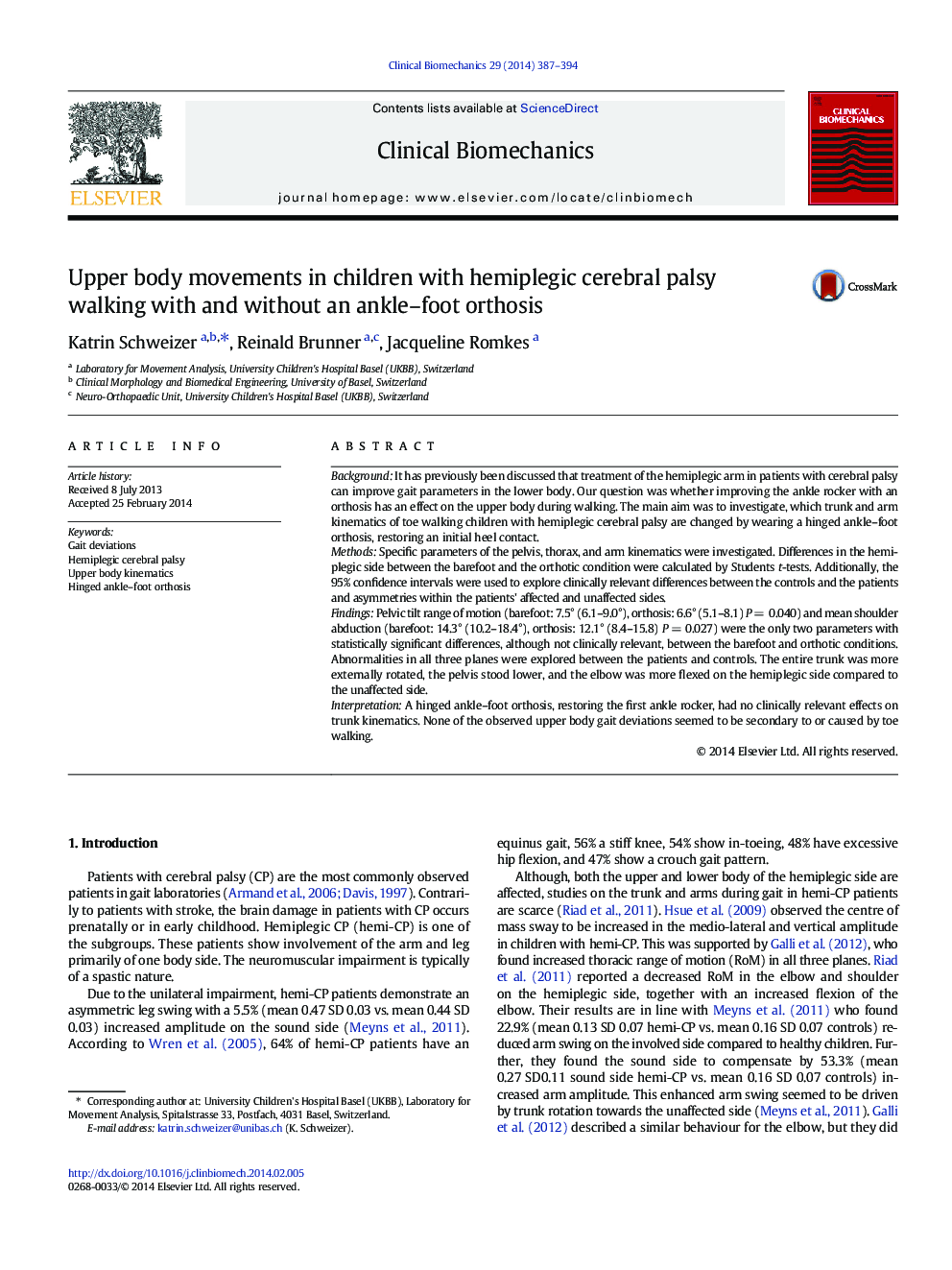| Article ID | Journal | Published Year | Pages | File Type |
|---|---|---|---|---|
| 6204843 | Clinical Biomechanics | 2014 | 8 Pages |
BackgroundIt has previously been discussed that treatment of the hemiplegic arm in patients with cerebral palsy can improve gait parameters in the lower body. Our question was whether improving the ankle rocker with an orthosis has an effect on the upper body during walking. The main aim was to investigate, which trunk and arm kinematics of toe walking children with hemiplegic cerebral palsy are changed by wearing a hinged ankle-foot orthosis, restoring an initial heel contact.MethodsSpecific parameters of the pelvis, thorax, and arm kinematics were investigated. Differences in the hemiplegic side between the barefoot and the orthotic condition were calculated by Students t-tests. Additionally, the 95% confidence intervals were used to explore clinically relevant differences between the controls and the patients and asymmetries within the patients' affected and unaffected sides.FindingsPelvic tilt range of motion (barefoot: 7.5° (6.1-9.0°), orthosis: 6.6° (5.1-8.1) P = 0.040) and mean shoulder abduction (barefoot: 14.3° (10.2-18.4°), orthosis: 12.1° (8.4-15.8) P = 0.027) were the only two parameters with statistically significant differences, although not clinically relevant, between the barefoot and orthotic conditions. Abnormalities in all three planes were explored between the patients and controls. The entire trunk was more externally rotated, the pelvis stood lower, and the elbow was more flexed on the hemiplegic side compared to the unaffected side.InterpretationA hinged ankle-foot orthosis, restoring the first ankle rocker, had no clinically relevant effects on trunk kinematics. None of the observed upper body gait deviations seemed to be secondary to or caused by toe walking.
